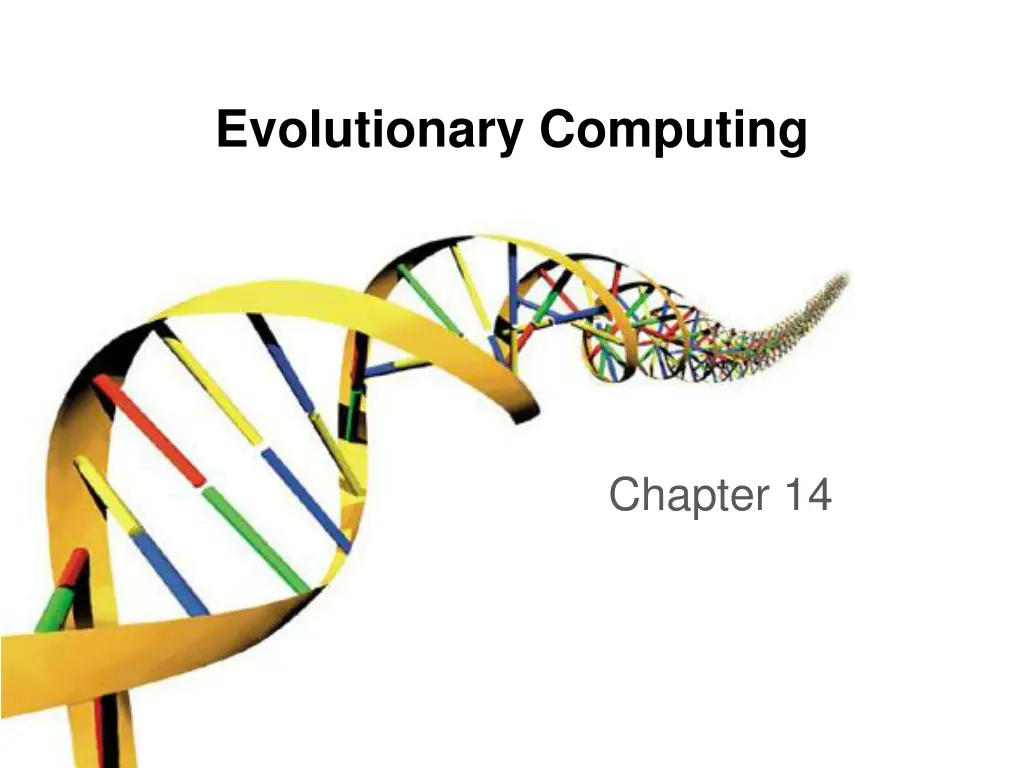
Interactive Evolutionary Algorithms Overview
Learn about Interactive Evolutionary Algorithms (IEAs) in Chapter 14. Understand the motivation, characteristics, and algorithmic approaches of IEAs, including interactive selection, population size, and intervention in the variation process. Discover how IEAs involve human judgment and adapt to changing contexts for improved search ability and diversity in problem-solving.
Download Presentation

Please find below an Image/Link to download the presentation.
The content on the website is provided AS IS for your information and personal use only. It may not be sold, licensed, or shared on other websites without obtaining consent from the author. If you encounter any issues during the download, it is possible that the publisher has removed the file from their server.
You are allowed to download the files provided on this website for personal or commercial use, subject to the condition that they are used lawfully. All files are the property of their respective owners.
The content on the website is provided AS IS for your information and personal use only. It may not be sold, licensed, or shared on other websites without obtaining consent from the author.
E N D
Presentation Transcript
Evolutionary Computing Chapter 14
Chapter 14: Interactive Evolutionary Algorithms Motivation Characteristics Approaches Interactive evolution as design vs. optimization 1 / 6
Motivation Interactive evolution (IE): measure of a solution s fitness is provided by a human s subjective judgement World is full of examples of humanoid intervention (pets, food crops) Applications of IE Algorithms: capturing aesthetics in art and design, personalization of artefacts such as medical devices Human s judgement Advantage: insight and guidance Disadvantage: inconsistent, loss of attention 2 / 6
Characteristics The user becomes effectively part of the system (like in agricultural breeding) Features that impact on the design of IEAs: Effect of time: Avoid lengthy evolution and focus on making rapid gains to fit in with human needs Human decision takes longer than evaluation mathematical fitness function Effect of context: Human expectations change in response to what evolution produces Advantages of IEAs: Handling situations with no clear fitness function Improved search ability, increased exploration and diversity 3 / 6
Algorithmic Approaches (1/2) Interactive selection and population size Subjective selection Direct (choosing individuals for reproduction) Indirect (assigning fitness, sorting) Use of small population because: Limited number of solutions can be shown When ranking, the pair-wise comparisons grow rapidly Multi-objective EAs are used for problems with mixture of quantitative and qualitative aspects 4 / 6
Algorithmic Approaches (2/2) Intervention in the variation process Implicit: periodically adjust the choice and parameterisation of variation operators, using the given score to control mutation Explicit: inspect promising solutions to adjust them by hand and place them back in to the population (Lamarkian) Use of surrogate fitness function Approximate the decision a human would make Advantage: can use large populations 5 / 6
Interactive evolution as design vs. optimisation IE is related to evolutionary art and design 6 / 6














